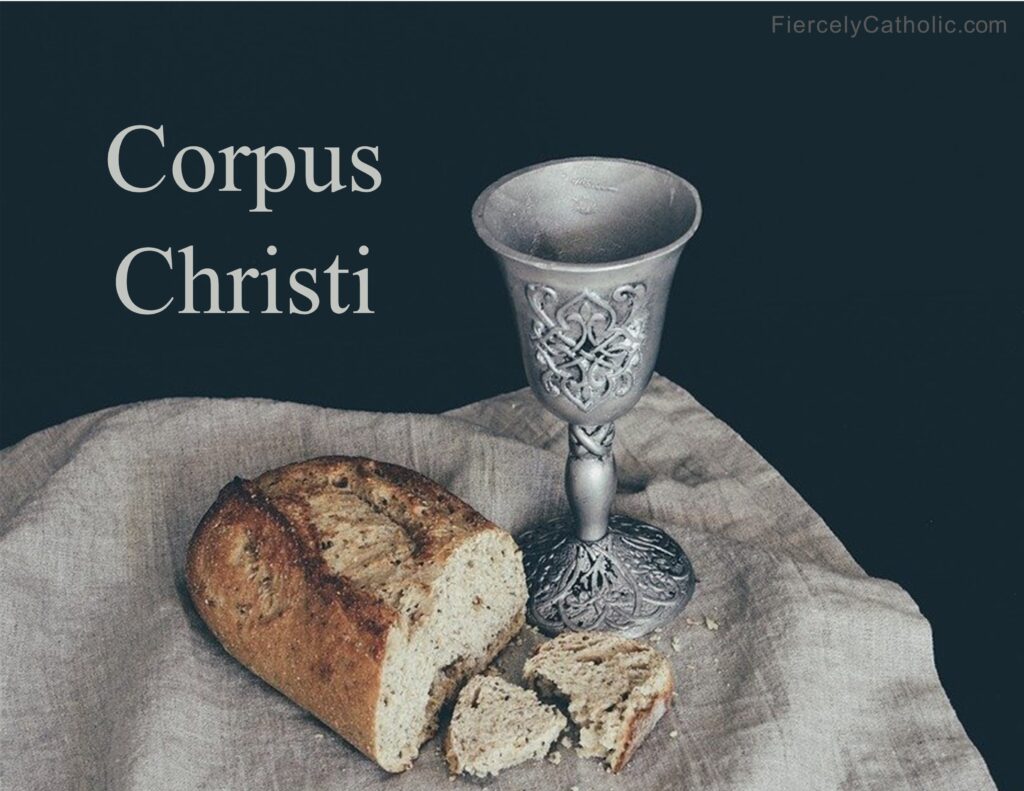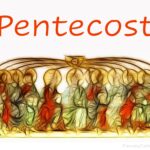
Although Jesus is present in his Church in many ways, his presence in the Eucharist is special because this is where He is real, substantial, and complete.
In the Bible, Jesus taught that what was once bread and wine are not merely a symbol but are his true Body, Blood, Soul, and Divinity. The Church teaches that this occurs through a process called transubstantiation.
The Latin phrase for Body of Christ is Corpus Christi. The term Corpus Domini may also be used, meaning the Body of the Lord.
The feast of Corpus Christi was inspired by visions of a young 13th century religious woman from Belgium and gained greater devotion after a Eucharistic miracle occurred in Orvieto, Italy in 1263.
Extended to the Universal Church by Pope Urban VI in 1264, the sole purpose the Feast of Corpus Christi is to emphasize this real, true, and substantial presence of Jesus Christ in the Eucharist to Catholics every year.
Now known as the Solemnity of the Body and Blood of Christ, it was traditionally celebrated on the 60th day after Easter, a Thursday, but it is now usually celebrated on the following Sunday.
In 2022, the Solemnity of the Most Holy Body and Blood of Christ marked the beginning of a 3-year National Eucharistic Revival intended to increase devotion and belief in the Eucharist.
Christ is really there:
Because Jesus told us:
A solemn commemoration of the institution of the sacrament:
John 6: 51
“I am the living bread that came down from heaven; whoever eats this bread will live forever; and the bread that I will give is my flesh for the life of the world.”
Consuming the Blood of God:
The New Testament Manna must be greater than the old manna:
It is highly fitting that Christ should have wanted to remain present to his Church in this unique way. Since Christ was about to take his departure from his own in his visible form, He wanted to give us his sacramental presence; since He was about to offer himself on the Cross to save us, He wanted us to have the memorial of the love with which He loved us “to the end,” even to the giving of his life. In his Eucharistic presence He remains mysteriously in our midst as the one who loved us and gave Himself up for us, and He remains under signs that express and communicate this love: The Church and the world have a great need for Eucharistic worship. Jesus awaits us in this sacrament of love. Let us not refuse the time to go to meet Him in adoration, in contemplation full of faith, and open to making amends for the serious offenses and crimes of the world. Let our adoration never cease.
Catechism of the Catholic Church 1380
“If it’s a symbol, to hell with it.”:
The Word of God can change existing matter:
What is the precise significance of today’s Solemnity, of the Body and Blood of Christ? The answer is given to us in the fundamental actions of this celebration we are carrying out: first of all we gather around the altar of the Lord, to be together in his presence; secondly, there will be the procession, that is walking with the Lord; and lastly, kneeling before the Lord, adoration, which already begins in the Mass and accompanies the entire procession but culminates in the final moment of the Eucharistic Blessing when we all prostrate ourselves before the One who stooped down to us and gave his life for us.
Pope Benedict XVI, Homily, 22 May 2008
Proof of a Eucharistic miracle from over 750 years ago:
Christ dwelling among us:
Celebrating the Eucharist at the tomb of Christ:
The Truth, Goodness, and Beauty of the Catholic Church
Claim your inheritance:
Share this page with friends and family to start a conversation about your faith.
Don’t miss a post. Learn more about the Catholic Church and strengthen your Catholic faith.
Find more Fiercely Catholic video issues here.
Subscribe here.


